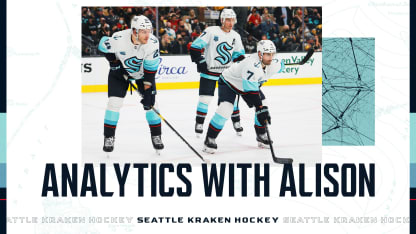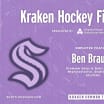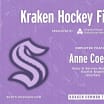"We wanted to see a different combination with Wenny (Wennberg) with Ebs (Eberle) and Schwartzy (Schwartz)," Dave Hakstol said post-game. "That's the biggest thing we wanted to see."
While we're used to looking at a player's individual stat line or evaluating a team as a whole, methods to truly understand a line have seemingly eluded us. Often, the limits of what data we had meant just adding up points scored for everyone on a line. But we are getting to a place that we can do more.
Let's dig in.
Thanks to sites like Evolving-Hockey.com and NaturalStatTrick.com, we can see how players performed together for exactly the time that they were on ice as a unit. And for Wennberg and his new linemates, that result was one of the bright spots to come out of Monday's loss.
According to NaturalStatTrick, in terms of shot-based measures, among the Kraken forward lines, Wennberg, Eberle, and Schwartz in 14:22 of five-on-five ice time, had the best unblocked shot share (58.33 percent) and shot quality share (53.27 percent) of the game.
This means that when this line was on the ice, Seattle had the advantage in terms of pucks being fired toward the net and the quality behind each of those shot attempts.
What's even more compelling is that for each of these three players, their numbers together were better than they were as individuals (with special teams and line changes - a line doesn't always spend every second of each player's ice time together).
In both measures we described above (unblocked shot attempts and shot quality) each of these forwards had lower individual percentages than their line did as a whole. In fact, it was only when they were together that they gained the advantage in shot quality.
Is it worth drawing concrete conclusions from one game? Likely not.
First and foremost, the amount of time any line plays together in one game is not nearly a big enough sample from which judgments should be made.
Second, the data points we've reviewed here are missing key parts of truly evaluating a line's effectiveness, including transitional play, passing effectiveness or chemistry.
We're missing this kind of data in the public arena because some of it takes time to collect, and some of it has yet to have a way to be measured at all!
But what we do know is that we can look at how combinations of players perform - especially over more significant periods of time - to understand their performance.



















